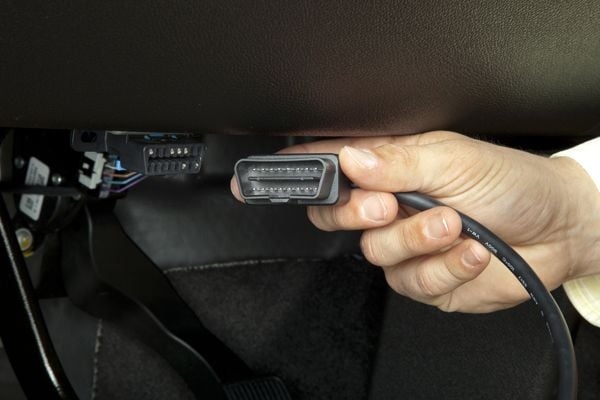Dodge Ram 1994-2008: Why is My Truck Backfiring?
You hit the gas and suddenly hear a loud blast. No one is shooting, your Dodge Ram just needs diagnosing.
This article applies to the Dodge Ram 1500 (1994-2008).
Backfires are the premature ignition of fuel through the intake plenum or manifold. The result is often a loud bang like a gun shot, and often black smoke is visible from the tailpipe. This reaction is combined with the vehicle running roughly. There are several causes for this issue. The motor may be out of time at the timing chain and/or distributor being installed incorrectly. The vehicle could also have a clogged catalytic converter. There could be a bad crank sensor or even a bad throttle body sensor. Another cause could be a bad fuel filter.

Materials Needed
- Ratchet set with various sockets
- Flat head and Phillips screwdrivers
- Throttle body cleaner
Step 1 – Scan the vehicle
Often, the vehicle's on board computer can tell the user what's wrong with it. You can plug in a diagnostic tool or go to your local parts store for a free scan.
- Locate the OBD port under the dashboard.
- Connect diagnostic reader.
- Write down codes and research them.

Pro Tip
The issue with back firing has often resulted in a bad crank sensor or bad throttle position sensor (TPS). The code readout could confirm this so that you are not blindly replacing sensors.
If the issue persists, move on to Step 2.
Step 2 – Clean throttle body and IAC
A dirty throttle body can adhere to rough operation. If the channels to the manifold are not clear and are grimy, it could cause running issues. There is a pintle on the IAC which can get clogged up as a result of this.
- Disconnect the battery.
- Disconnect any plugs connected to the throttle body.
- Remove the four bolts holding the throttle body in place.
- Clean throttle body and IAC thoroughly.
- Re-install throttle body and IAC.
- Reconnect any plugs/harnesses.
- Reconnect battery.

Figure 2. Thoroughly clean the throttle body with a special spray. 
Figure 3. When cleaning the IAC, never move the brass probe more than 1/4" in travel.
Featured Video: How to clean IAC and Throttle Body
Pro Tip
If you have a friend assisting you, have them start the car. Observe the "pintle" on the IAC to see that it moves in and out smoothly when idling. If it does not, it could be a sign that the IAC is bad and should be replaced. Vacuum lines can also be checked at this time as they are related to the air flow, and a break can cause a leak resulting in rough running issues.
If the vehicle is still running rough and back firing, move on to Step 3.
Step 3 – Check fuel and spark
When the vehicle is backfiring, it could be that one of the cylinders is misfiring. This is often caused by a bad spark plug. But, this issue could also be related to a faulty fuel filter or fuel injector.
- Remove Cylinder 1 spark plug and test for a spark against the bare metal.
- Remove fuel injector and test for fuel spray.
- Check distributor to ensure it is not 180 degrees out of phase.

Featured Video: Replacing Fuel Filter on a Dodge Ram
Pro Tip
If the fuel filter has never been replaced, this is a good time to replace it. Refer to the video above.
If all the plugs are firing correctly and the injector/fuel filter are working, then move on to Step 4.
Step 4 – Perform compression test
At this point, it is quite possible that a bent valve might be the culprit here and a compression test will help determine this.
- Remove Cylinder 1 spark plug wire and spark plug.
- Insert compression hose fitting into spark plug hole.
- Crank the car and mark down pressure reading.
- Repeat for each cylinder.

Figure 5. Make note of the compression numbers for comparison. 
Figure 6. Repeat the compression reading for each spark plug cavity.
Pro Tip
The range for compression in each cylinder should read between 150-160. If the valves are bent, as seen in the photo above, they will need to be replaced.
Related Discussions
- Diagnosing Rough Running and Backfires-Dodgeforum.com
- Truck Not Starting After Distributor, Cap and Wire Change-Dodgeforum.com






